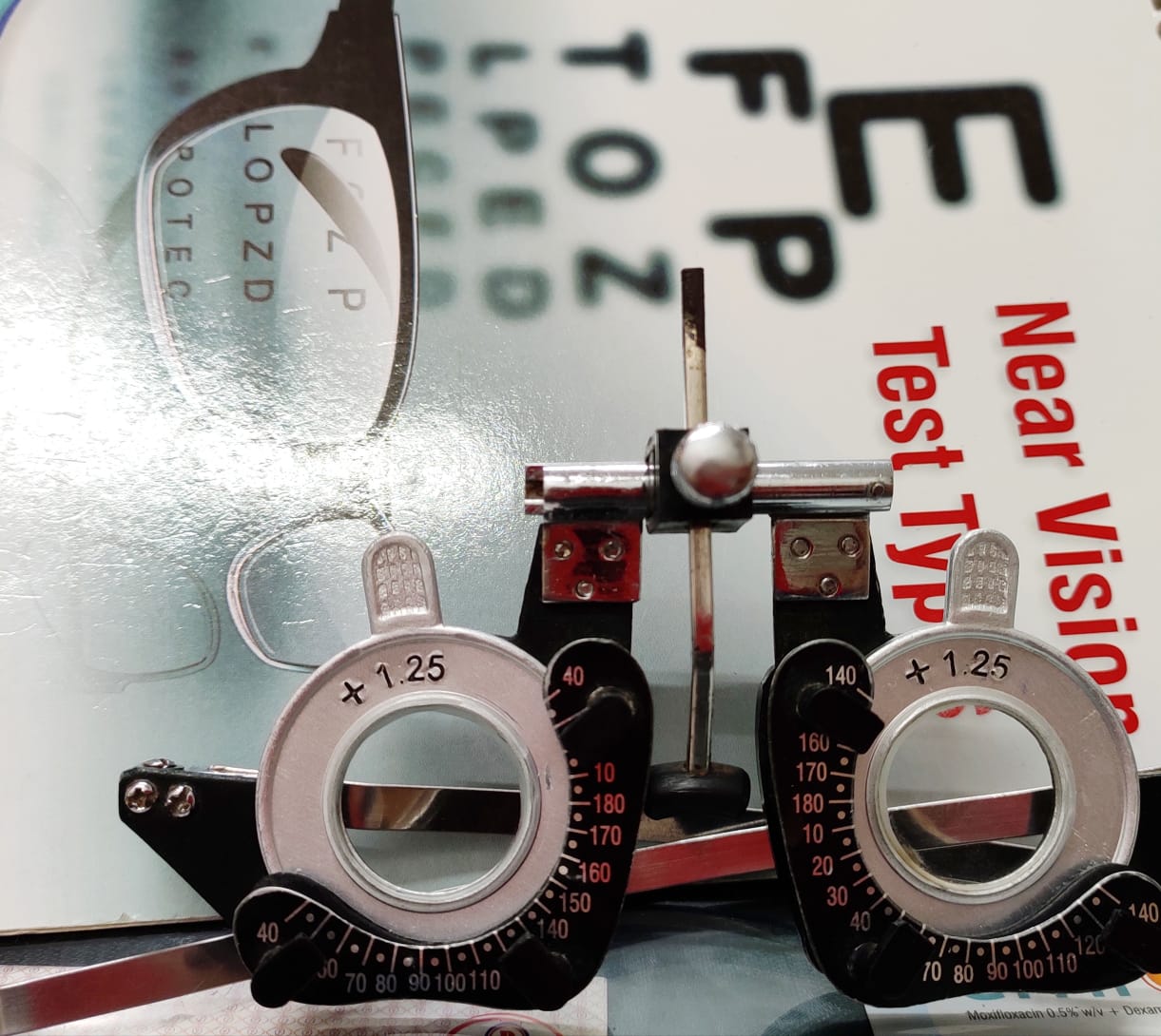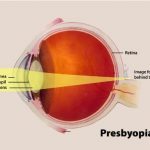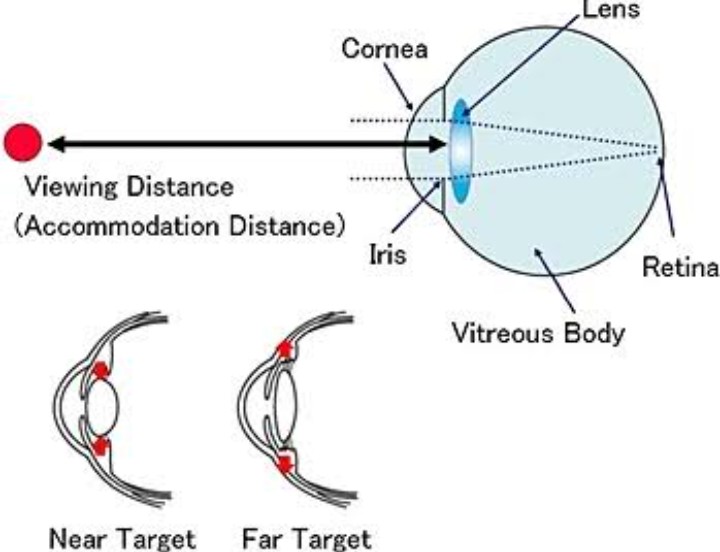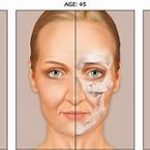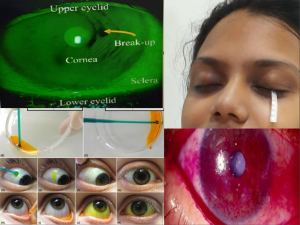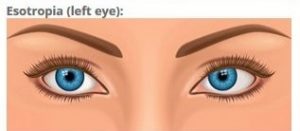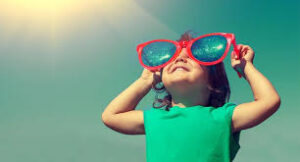ABSTRACT : Presbyopia is the age-related inevitable deterioration of the near vision which is experienced in over 80% of people aged 38-40 years and above. It is also known as the eyesight of old age, but it is not a refractive error. It is due to physiological deficient of accommodation due to hardening of crystalline lens. To correct we commonly use spectacles or magnifying glasses.
OBJECTIVE: The cause of presbyopia.

REASONS: It is due to the decrease in the accommodative power of the crystalline lens, with advancing age, leading to presbyopia. It is mainly caused due to the changes in lens like decease elasticity and sclerosis of lens substance and capsule, deteriorate power of the ciliary muscles may contribute. Before 40 years presbyopia can be caused by uncorrected hyperopia, open angle glaucoma, premature hardening of the crystalline lens and presenile weakness of ciliary muscles.
CONCLUSION: Presbyopia is a continuous but gradual age related loss of accommodation and has trigger many age-related changes that occur in the eye. So we can say that the principle factor for causing presbyopia is the hardening of the material of crystalline lens nucleus.
KEYWORDS: Accommodation, hyperopia, , sclerosis, crystalline lens, ciliary muscles.
INTRODUCTION:
Presbyopia is the age-related inevitable deterioration of the near vision which is experienced in over 80% of people aged 38-40 years and above. It is also known as the eyesight of old age, but it is not a refractive error. It is due to physiological deficient of accommodation due to hardening of crystalline lens. In general and commonly corrected by spectacles, contact lens, refractive surgery or magnifying glasses. More than 826 million people suffer from unaddressed presbyopia in 2020.
When the light falls on your eye from a near object, the light diverges and passes through the cornea, pupil then lens and the lens accommodated and the light falls on the retina, but in case of presbyopia the lens looses elasticity and so the lens is not convex enough to focus the light on the retina.
Women above 40 years of age have higher risks of presbyopia than men of the same age. Its predicted because of the different task perform by them rather than physiological gender differences.

CAUSES: The theory of accommodation was given by Von Helmholtz said that the ciliary muscle moves forward and along the axis in the eye during contraction, therefore relax the tension on the anterior zonular fibres and allows the crystalline lens to become more convex and thick .When then accommodation is relaxed, the ciliary muscle relaxes, and allows the elastic part of choroid to pull the ciliary muscle backward and therefore increases the tension on the anterior zonules to flatten the crystalline lens.
Due to the alteration of each one of the mentioned above components that helps in accommodation is the proposed reason for presbyopia.
Pathophysiology of presbyopia:
Theories that can explain the development of presbyopia include:
- Changes in the elastic properties of the lens capsule.
- Sclerosis of the crystalline lens substance
- Weakening of the ciliary muscles
- Changes in the elastic properties of the lens capsule.
The molding capacity of the lens capsule does not change with age, but the forced to stretch the crystalline lens is not there.
- Sclerosis of crystalline lens substances:
This is the main caused of presbyopia, here is hardening of the nucleus of the lens material and exerts pressure on the elastic capsule. Initially sclerosis was associated with the decrease in the water content of the lens, but it remains equivocal. It was then found that the density of the protein and the lens fibres increases, which leads to sclerosis
- Weakening of the ciliary muscles:
As the lens nucleus become sclerosed, so the lens does not change its shape even after applying tension by the ciliary and zonules. So at a point of time due to strong tension built on these muscles without and reaction. So there is no movement the ciliary muscles and it becomes weak with advancing age.
So in the conclusion we can say that the principle factor for causing presbyopia is the hardening of the material of lens nucleus.




